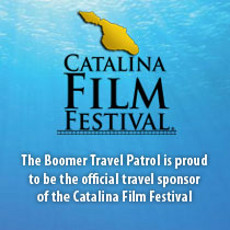Full Article:
Scuba diving in Mongolia? Wait a minute, isn’t that a landlocked country in the middle of Asia with the Gobi Desert covering a significant part of it?
Yes indeed. However, a large lake on the northern border adjacent to Siberia offered just such an opportunity.
Siberia? Isn’t that COLD?? Yes indeed, again. But the lure of first exploration of this body of water proved very attractive.
Lake Khovsgol (pronounced HUHVS-gull), not far from its better known Siberian neighbor Lake Baikal, is the second largest lake in Central Asia and contains 1-2% of the world’s fresh water. Revered by Mongolians as sacred and surrounded by mountains in a protected Mongolian national park, this narrow, 80 mile-long body of water resides at an altitude of 5000 feet and looks like one of the northern Great Lakes. The lake is frozen more than it is fluid and therefore constitutes a challenge requiring a dry suit and dive table calculation for altitude. This is not your Caribbean bath water.
This was clearly not a casual pleasure dive, and the objectives of the first scientific dive in Mongolia sought to determine the quality of the lake water and to evaluate the nine known species of fish. Rumors of a large unknown fish referred to as an “underwater deer” did indeed raise some concerns but we were equipped with side-scan sonar to aid in identification of any such submerged strangers. The exciting opportunity to identify new species overrode any misgivings. Furthermore, there were Russian shipwrecks and about 40 cars and trucks that fell through the ice in addition to rumors of Buddhist relics thrown by monks into the lake during a time of persecution in the 1930s.
Getting to Mongolia itself was quite a hike for our expedition with about a dozen Explorers Club members. Long flights brought us to Beijing and then to the capital Ulaan Bataar where about 1.4 million of the 2.9 million Mongolians live. This largely undeveloped city was undergoing change due to the influx of money from foreign mining interests. After a night to gather our equipment and relax at the Genghis Khan bar, we flew 3 hrs to the regional city of Moron where we boarded land rovers for the 12 hour trek to Lake Khovsgol over very poor roads but beautiful vast, open steppes. Speculation was unresolved about how the citizens of Moron referred to themselves, whether they were Moronians or just Morons. Anything for a laugh on a long road trip.
Arriving beaten up by the rough roads, we stashed our gear into our gers. These octagonal reinforced tents with cots, also known by the Turkish name yurt, were actually very comfortable, especially with the fire going inside, necessary because temperatures fluctuated from 800 F in daytime to 300 F at night.
Diving in remote Lake Khovsgol was very challenging. No dive centers, no air fills, no compressors, and certainly no palm-frond covered cabanas serving post-dive piña coladas. The nearest dive center was probably 5 hours by flight so we had to bring everything including back up gear. Our expedition moved over one ton of equipment, including 16 tanks, two air compressors, and personal gear for 10 divers.
Dive planning and safety briefing occurred in the morning before entering the water. Some of us patrolled the lake surface with sonar while others dove, with a watcher on shore for safety given the diving conditions. The water proved to be quite clear (and cold with sharp thermal gradients) and water samples demonstrated no biological or chemical pollutants. We located a few interesting Russian era shipwrecks but no Buddhist relics or gold items. The lake was full of a large cod-like species and the smaller Siberian grayling that were unafraid of humans since there is little tradition of eating fish and low human population. We could swim right up to schools without spooking them. It certainly was tempting to snag a few to throw on the grill but we respected our hosts and refrained. We did not see any taimen, the largest trout in the world with the record length 7 feet and weighing 230 lbs, they are in rivers. There is some sport fishing for these by non-Mongolians but the catch and release practice may have a different meaning….they might have to release you! Maybe that is the “underwater deer”.
My return to the airport was highlighted by my Mongolian driver who drove as fast as he could over terrible roads. He spoke no English and I knew no Mongolian, so we communicated by hand signals and grunts. Trying to get him to stop for a biological break is a story for another column. What a buggy ride! But a spectacular trip overall.
April 16, 2023








